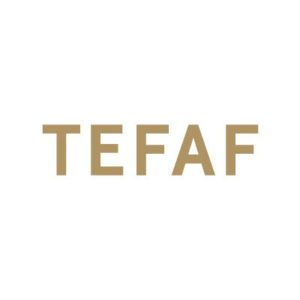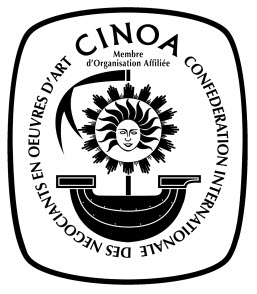 TEFAF has announced it will no longer utilize dealers and auction experts in its vetting process at its marque fair in Maastricht and its spinoff in New York, instead using museum curators, conservators, and independent scholars. ‘Independent’ is the key word here, as the presumption is that what still exists of an old boy network within the trade is at odds with the independently objective judgment that scrupulous vetting requires.
TEFAF has announced it will no longer utilize dealers and auction experts in its vetting process at its marque fair in Maastricht and its spinoff in New York, instead using museum curators, conservators, and independent scholars. ‘Independent’ is the key word here, as the presumption is that what still exists of an old boy network within the trade is at odds with the independently objective judgment that scrupulous vetting requires.
 For us, and indeed for any other member of the accredited trade in art and antiques, participation in any fair is dependent on vetting, where material is examined for authenticity primarily by experts drawn from the trade. I am not aware of any dealer like us who would participate in any fair that is not vetted. Indeed, the criticism that is generally leveled at the virtual fairs that online platforms provide is that the material offered is not vetted, with those in the accredited trade posting material of quality and authenticity that can be vouched for, cheek by jowl with, shall we say, something less than equivalent quality and of questionable authenticity.
For us, and indeed for any other member of the accredited trade in art and antiques, participation in any fair is dependent on vetting, where material is examined for authenticity primarily by experts drawn from the trade. I am not aware of any dealer like us who would participate in any fair that is not vetted. Indeed, the criticism that is generally leveled at the virtual fairs that online platforms provide is that the material offered is not vetted, with those in the accredited trade posting material of quality and authenticity that can be vouched for, cheek by jowl with, shall we say, something less than equivalent quality and of questionable authenticity.
In fairness, unaccredited dealers who offer their gear either online or at unvetted fairs may not necessarily know if a piece constitutes the real deal or not. Part of the process of accreditation is dependent on the assessment of a dealer’s knowledge in his field of specialization, and not just the quality of his stock. He is, then, obliged of course to comply with a strict code of conduct, accurately describing the material on offer, including detailing any restoration. Then, of course, there are the schlockmeisters, whose objective it is to willfully misrepresent what it is they have to a gullible buyer. The ignorant dealer and the shady dealer both offering something other than the actual, both represent pretty much the same peril to a prospective buyer.
Even within the accredited trade, there does exist, as mentioned above, an old boy network with relationships established within the trade, where dealers whose knowledge and expertise are otherwise without question will perhaps overlook something- a significant restoration, a possible dating error, a specious attribution- if the dealer’s material being vetted is a buddy.
Or, on the contrary, if a dealer is not amongst the favored few, his material might be subjected to inordinate scrutiny, resulting sometimes in requirements to label his material with disclaimers and caveats that make the piece so labeled as not just unsaleable but tainted, and simultaneously tainting the reputation of the dealer. Unfortunately, we have first-hand knowledge of this kind of thing, with a fine quality piece we had at a fair vetted out, only to determine that a member of the vetting committee had a similar piece he wanted to have on offer, bashing our item to remove competition. A sidebar- in spite of being so angry at the time I nearly had a stroke, the nefarious dealer with whom we had this contretemps has recently gone out of business. The slimy bastard- and I mean this in the nicest possible way. We are, I say with some glee, still in business.
Unfortunately, TEFAF is sadly faced with trying to get ahead of recurrent and unsettling stories, some of them very, very prominent, about dealers well-established in the trade and prominent in very many TEFAF and similarly vaunted fairs, who’ve in the last few years sold questionable, albeit costly, pieces to both private and institutional collectors. I’ve written not so long ago about the vicissitudes of the centuries old Galerie Kraemer, a fixture in the Paris trade and a TEFAF darling, and one is reminded of the cobbled together horrors with high profile ‘attributions’ associated with the Pimlico Road dealer, the late and not entirely lamented John Hobbs.
What’s equally unfortunate, though, is the method by which TEFAF seeks to bring probity to the vetting process. By in large, I’d say that most museum curators and conservators will bring a certain amount of dispassion to the vetting process, without any of the ‘one hand washing the other’ obligation or competitive enmity dealers might bring as baggage. What I wouldn’t say, though, is that these experts are expert in anything beyond their own institutional collections. Dealers, and I include myself, look at very, very many more objects in very, very many more environments than do those in the museum world- and with a stronger motivation to get things right. A dealer makes a mistake in purchasing an item for stock, and he doesn’t pay the rent, or eat, for the next month or six. The museum curator makes a mistake, and the gallery wall tag is corrected, or at worst, the ‘mistake’ goes into the back room. If my gentle readers don’t know, most fine and decorative arts museums have considerably more in the back room than they do on the gallery floor.
Something I’ve said in the last paragraph, though, isn’t strictly true. Museum curators and those from more academic disciplines removed from the commerce of the art and antiques business might ostensibly be thought dispassionate, but one needs to remember that, when given the status of panjandrums, they will talk the most insignificant point of contention to death. I well remember colloquies at University College London and the Warburg Institute and reminded of the gleeful disputes (mostly unresolved) that were only interrupted by breaks- always taken on time- for tea and biscuits. People in the world of scholarship are always ready for tea and biscuits.
And indeed, although detached from the commercial world, there exists favoritism and strong enmities between scholars within the same discipline of intensities I would match with those similar emotions manifested by art and antiques dealers.
But it appears TEFAF’s decision to revamp vetting is fait accompli, with the arguments posited by me already given a good airing within the trade. As one well established dealer had it, at the end of the day, regardless of vetting the best fairs are dependent on the knowledge and integrity of the individual dealer, and it is the dealer in whom the prospective buyer should ultimately place his trust. As the saying goes, if you don’t know your jewels, then know your jeweler.
